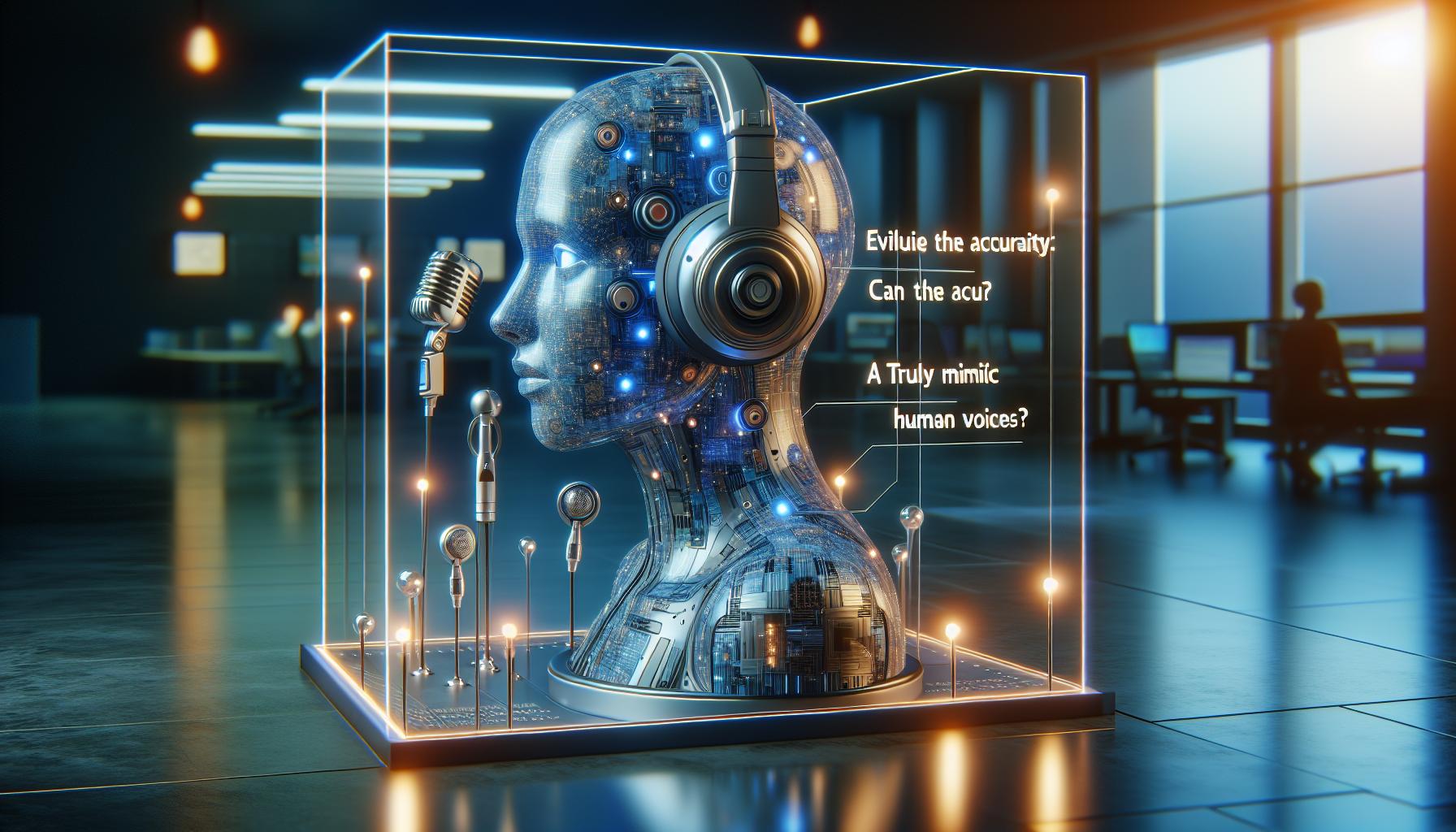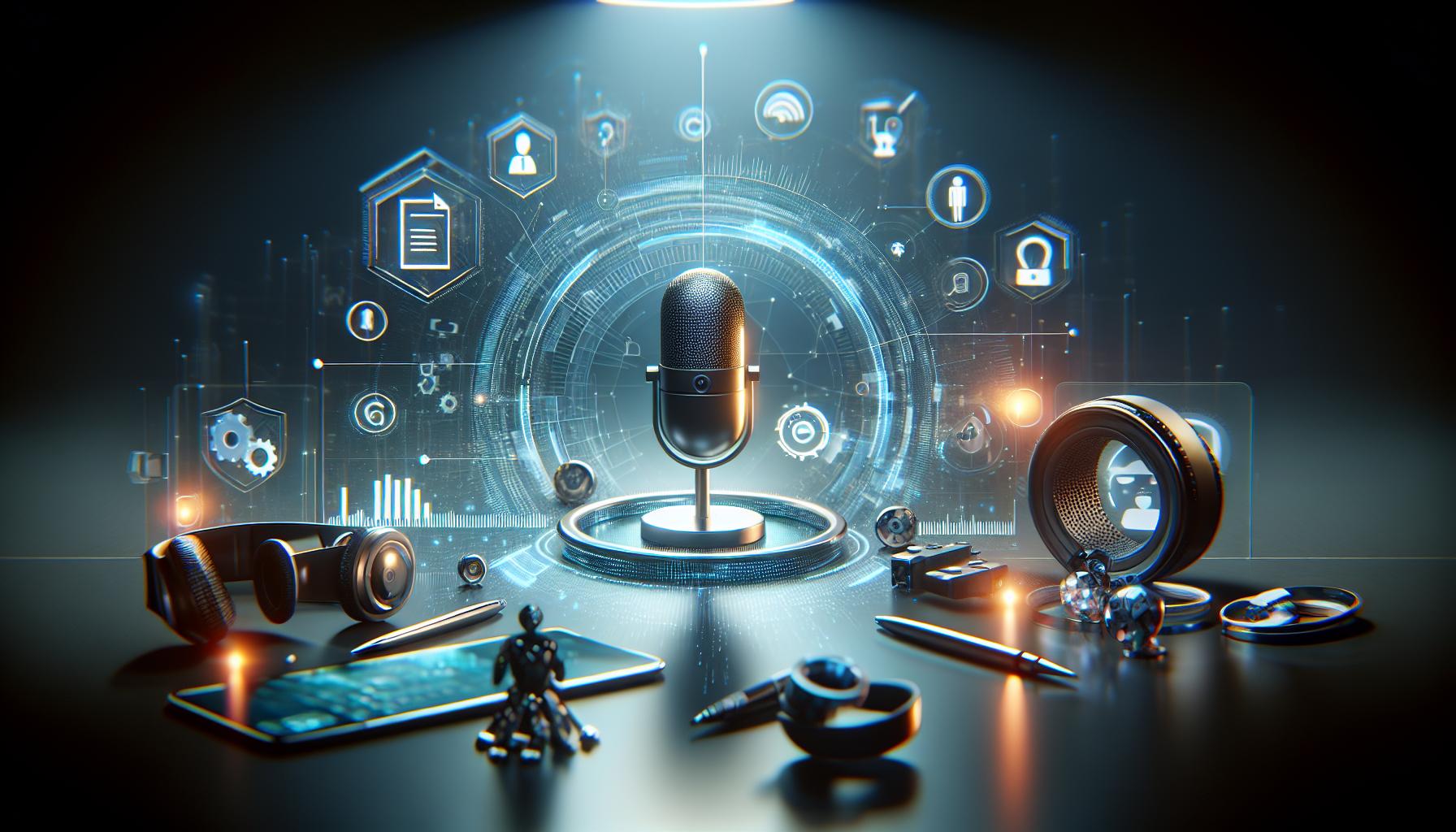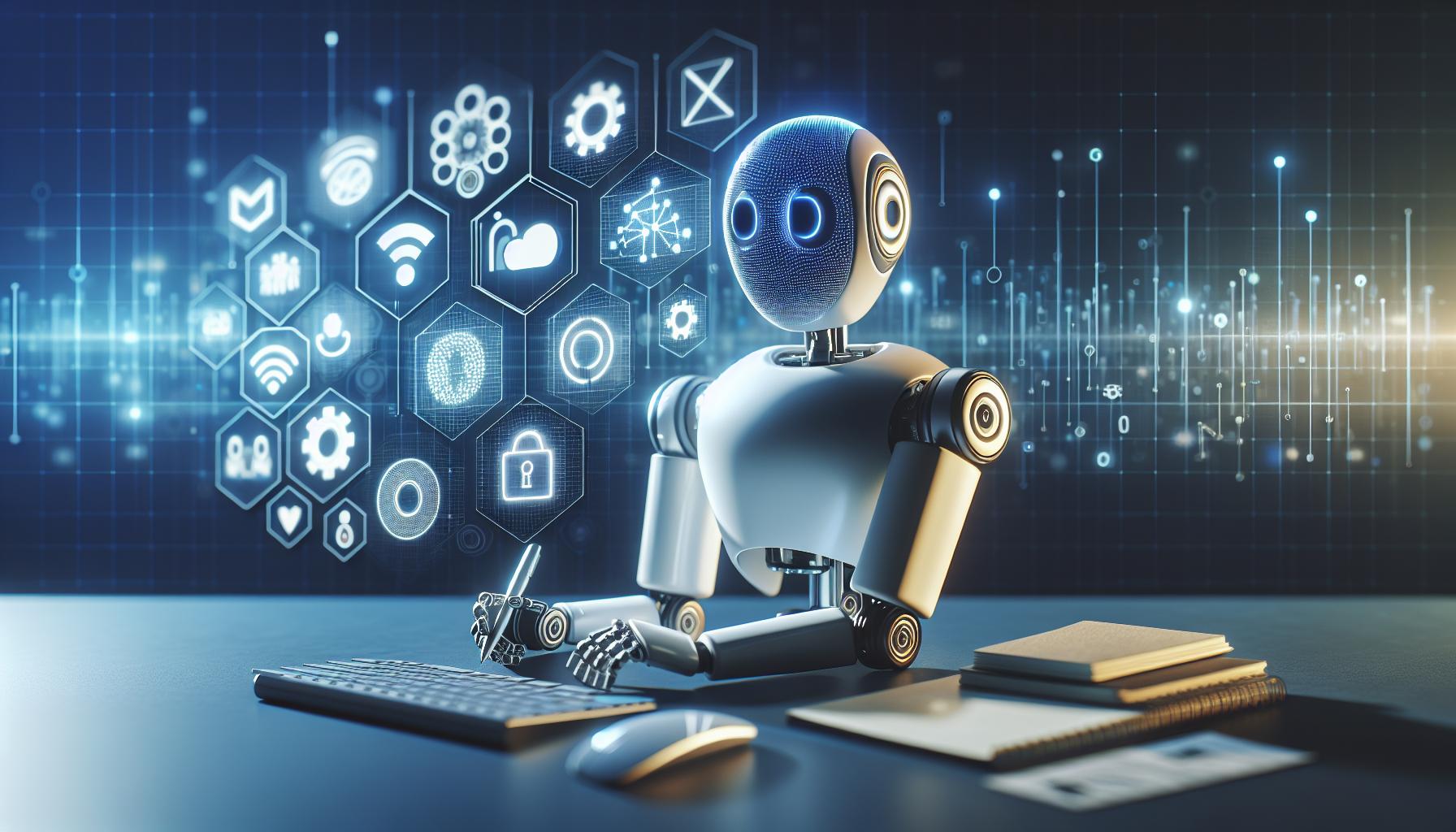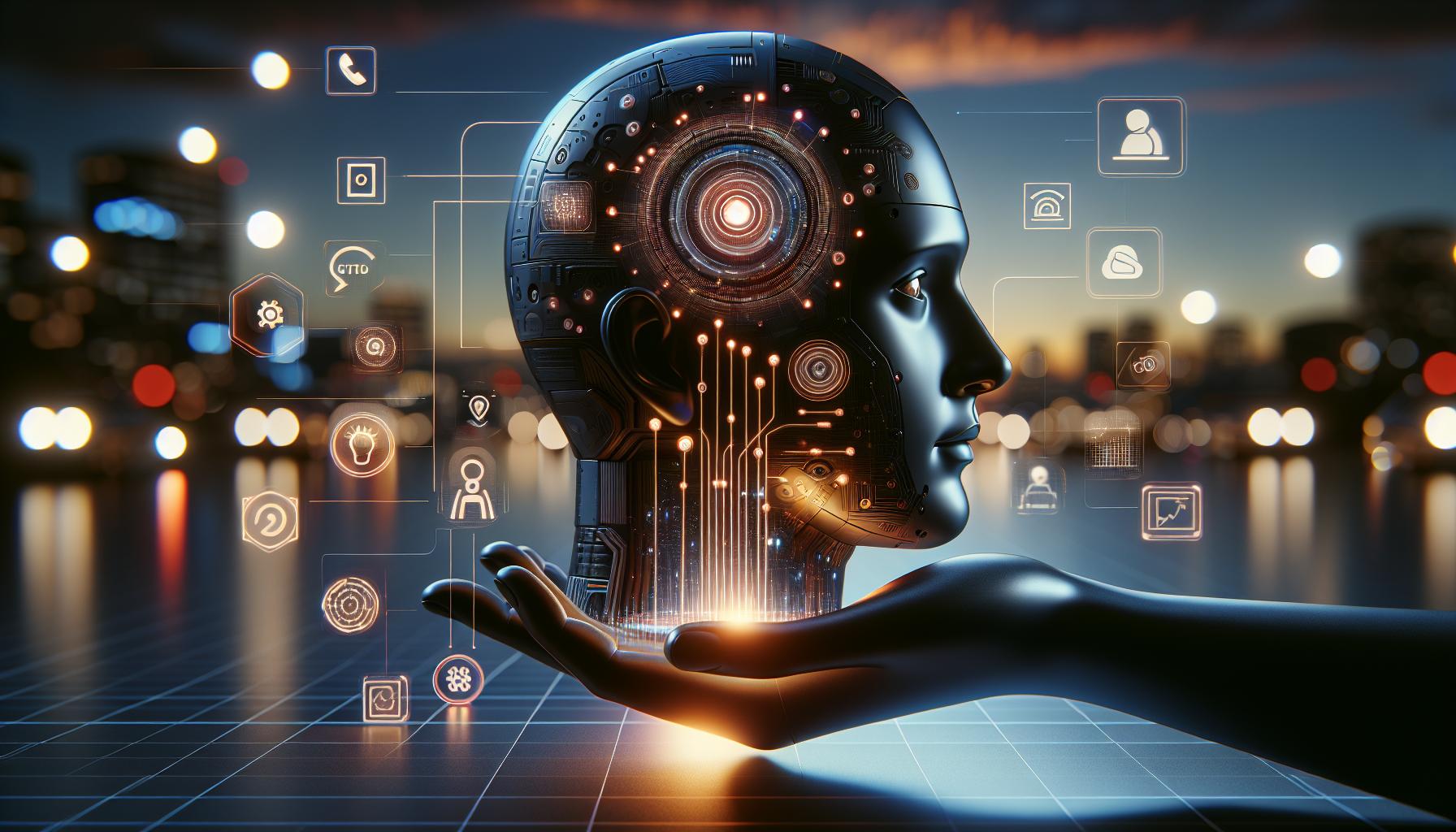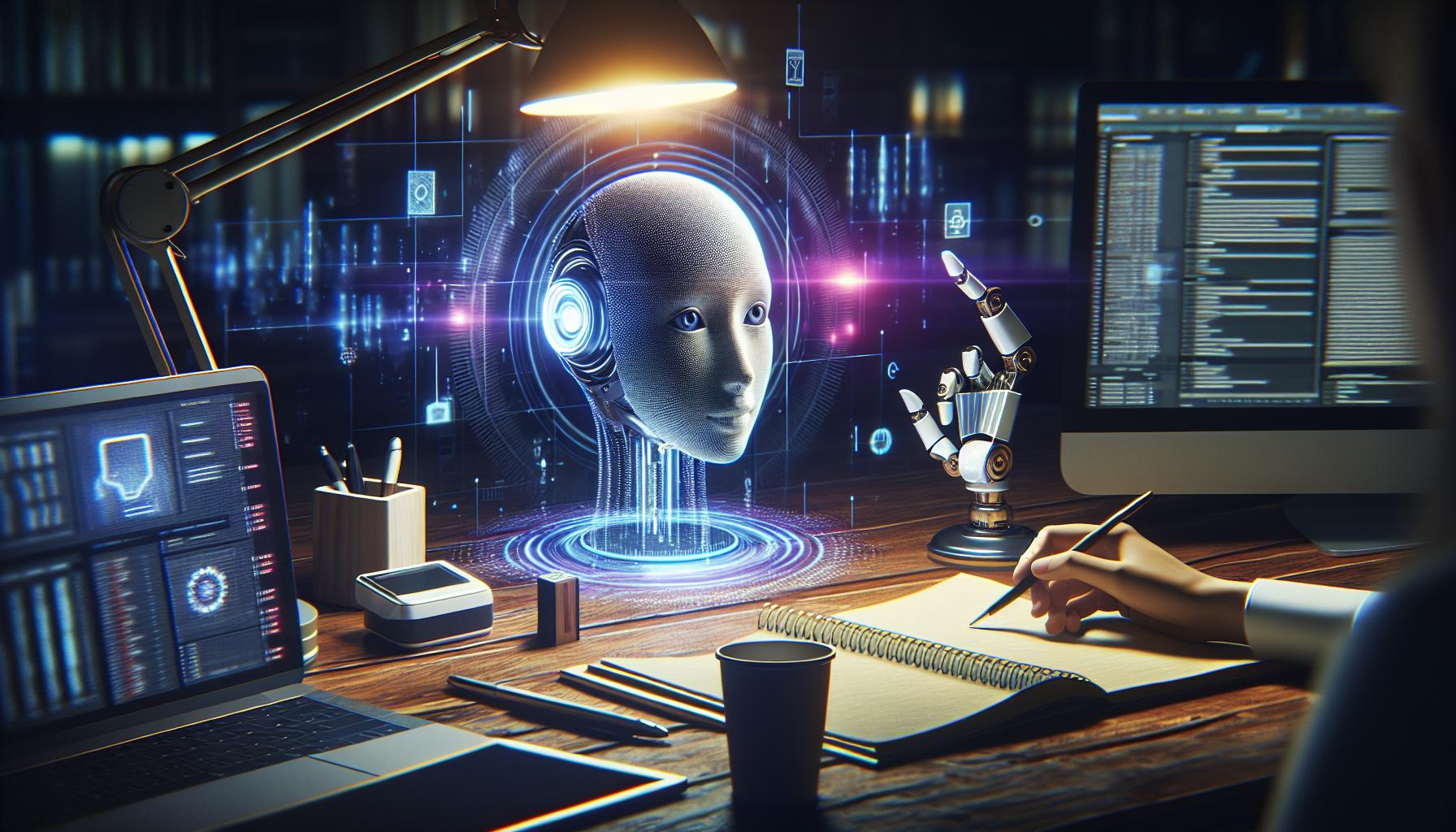As the popularity of AI voice changers grows, so do concerns about security and misuse.Can these technologies be trusted,or do they pose risks like voice identity theft and deepfake creation? Understanding the safety implications of dubbing AI is crucial for businesses and individuals alike,making it a timely topic in today’s digital landscape.
Understanding AI Voice Changers: How dubbing Technologies Work
How Dubbing Technologies Work
The rapid evolution of AI voice changers has transformed the landscape of content localization, making it easier than ever to adapt videos and audio for diverse audiences. At the heart of this technology lies machine learning algorithms that analyze and replicate human speech patterns. For instance, platforms like Eleven Labs offer capabilities to localize content across multiple languages using original voice textures, ensuring that the essence of the speaker is preserved during the dubbing process.
The core functionality of AI dubbing can be broken down into several key processes:
- Speech Recognition: The technology first transcribes audio into text, recognizing different speech patterns and nuances.
- Text Translation: Next, the transcribed text is translated into the desired language using advanced natural language processing.
- Voice Synthesis: the translated text is voiced by leveraging AI-generated audio that mimics the original speaker’s tone and inflection.
Such as, Camb.ai enhances this process by allowing content creators to seamlessly localize their material, ensuring that the final output engages viewers as effectively as the original content. By employing AI voice changers, users can create captivating translations that resonate with local cultures while avoiding the potential pitfalls of conventional dubbing methods, such as losing the emotional connection conveyed by the original voice.
Safety and Security Considerations
While the advantages of using AI dubbing are clear, questions ofen arise regarding the safety and security of these technologies.as highlighted in the article “Is Dubbing AI voice Changer Safe? Security Insights Revealed,” users should remain vigilant about the platforms they choose. Ensuring that content is processed through reputable services with robust data protection measures is crucial. Before utilizing AI dubbing, consider verifying the security protocols of the provider, especially those pertaining to user data and intellectual property rights.
Ultimately, understanding how AI voice changers operate empowers content creators and businesses to make informed decisions and leverage these tools effectively, all while addressing any concerns regarding the security of their materials.
The Security Risks of Using Dubbing AI Voice Changers
As the rise of Dubbing AI voice changers continues, users must recognize the potential security risks associated with these powerful tools. With applications in gaming, streaming, and communications, the convenience offered by AI voice technology also invites scrutiny regarding privacy and data protection. Unsecured or poorly managed voice changers could expose sensitive personal details, making users vulnerable to unauthorized access or cyber threats.
One of the primary concerns revolves around data privacy. Many dubbing AI platforms require users to upload voice recordings, which raises questions about how this data is stored, used, and shared. If these platforms do not implement robust security measures, users risk having their voice data compromised. To mitigate these risks, always choose reputable providers that adhere to strict data protection regulations. Ensure that the service includes clear data usage policies and offers options for users to delete their data after use.
Key Security Considerations
When evaluating the safety of dubbing AI voice changers, consider the following:
- Reputation of the Provider: Opt for well-known and trusted platforms that prioritize user security.
- Data Encryption: Verify that data is encrypted both in transit and at rest to protect against unauthorized access.
- User Control: Look for services that allow users to manage their data, including the ability to delete recordings permanently.
- Quality Assurance: Ensure that providers perform human quality checks on generated audio to avoid misuse of AI-generated voices.
Moreover, users should remain vigilant about the potential for identity theft. Dubbing AI voice changers can create highly realistic audio replicating a person’s voice, which could be used maliciously in scams or impersonation. It is indeed critical to maintain awareness of who you interact with online and to employ additional verification steps when communicating via voice-based platforms.
while Dubbing AI voice changers present exciting opportunities for creativity and engagement, acknowledging the associated security risks is vital. By choosing the right tools and implementing best practices for data security, users can enjoy the benefits of AI voice technology while minimizing potential threats. Always ask, “Is Dubbing AI Voice Changer Safe? Security Insights Revealed,” to remain informed and protected in your digital interactions.
Ethical Considerations in AI Voice Dubbing
Understanding the Ethical Implications of AI Voice Dubbing
As the popularity of AI voice dubbing continues to rise, driven by advancements in technology, it’s crucial to examine the ethical landscape that governs its use. Concerns about authenticity, consent, and the potential for misuse highlight the importance of establishing robust ethical standards in this innovative space. The question of whether the use of AI voice changers is secure and ethically sound is paramount, especially as more businesses and creators turn to these tools for their projects.
One of the key ethical considerations is the principle of consent. Dubbing technologies can replicate the voices of real individuals, raising questions about who has the right to use a person’s voice. Responsible companies,such as Deepdub and Murf, prioritize acquiring explicit permission from voice actors before employing AI duplication. This commitment ensures that the rights of individuals are respected and that they are compensated fairly for the use of their vocal likenesses.
Another meaningful concern revolves around fairness and portrayal. The AI voice dubbing industry must strive for diversity and inclusivity to avoid perpetuating stereotypes or marginalizing certain groups. Platforms like Respeecher are leading the way in implementing ethical AI voice cloning standards, emphasizing accountability and transparency in the creation of voice technologies. By integrating these ethical practices, the industry can foster trust among users and maintain integrity in its applications.
To navigate the complexities surrounding AI voice dubbing, stakeholders should consider the following actionable steps:
- Develop clear guidelines for ethical use, ensuring that all content creators understand the boundaries of AI voice technology.
- Implement stringent consent protocols to secure the usage rights of voice actors and creators.
- Promote diversity and fairness in voice selection processes, enhancing representation in media content.
- Establish transparent practices that allow users to trace the origins of the AI voices they encounter.
By embracing these ethical considerations,the industry can work towards a safer and more responsible application of AI voice dubbing—a priority that reflects the lessons learned from inquiries such as “Is Dubbing AI Voice Changer Safe? Security Insights Revealed.”
Evaluating the Accuracy: can AI Truly Mimic Human Voices?
Unveiling the Realism of AI Voices
The boundary between artificial and human voices is rapidly blurring, as advancements in AI technology enable remarkable voice synthesis. Many users,from content creators to businesses,are increasingly turning to AI voice changers for dubbing and narration. However,the pressing question remains: Can AI truly mimic human voices accurately?
AI voice changers leverage deep learning algorithms that analyze vast datasets of human speech to generate realistic vocal reproductions. This technology is designed to imitate not only the tone and pitch of a human but also the subtle nuances of speech patterns, such as pauses, intonation, and emotional expression. Despite these advancements, the technology can still fall short in conveying the full spectrum of human emotion or the intricate context behind specific dialogues. As an example, while an AI might excel in replicating a cheerful greeting, it may struggle with the complexities of sarcasm or sadness, possibly misleading the audience’s emotional reception.
- Accuracy of Emotion Representation: AI can simulate voice variations to express certain emotions, but it may still lack the depth of genuine human interaction.
- Context Awareness: AI systems often operate without understanding the context of a conversation,which may lead to inappropriate or unnatural speech patterns.
- Potential for Misrepresentation: If not carefully monitored, AI-generated speech can inadvertently misrepresent the intended message, especially in sensitive topics.
To ensure that AI is effectively mimicking human voices, developers are continuously refining voice modulation techniques and incorporating feedback mechanisms to address inaccuracies. Users considering tools for dubbing should critically evaluate several factors:
| Factor | Consideration |
|---|---|
| Quality of Dataset | The richness and diversity of the training dataset directly affect the AI’s ability to replicate human nuances. |
| User Controlled Parameters | Choose solutions that allow users to adjust tone, pace, and emotion for greater customization. |
| real-World Testing | Conduct tests with real audiences to gauge the effectiveness and accuracy of the generated voices. |
while AI voice changers have made significant strides in mimicking human voices, their effectiveness can vary widely based on the technology employed, data quality, and user oversight. Staying informed about the current limitations and possibilities of AI voice technology,as outlined in resources like “Is Dubbing AI Voice Changer Safe? Security Insights Revealed,” can empower users to make informed decisions in their content creation endeavors.
Privacy Concerns: What happens to Your Voice Data?
Understanding the Privacy Risks of Voice Data
In the realm of AI technologies, particularly those involving voice dubbing and alteration, concerns surrounding data privacy have surged. With every command and interaction captured as voice data, users are increasingly asking: what happens to this information? The potential for misuse is significant, as voice AI systems can be susceptible to hacking, which may lead to unauthorized access to personal information or even control over smart home devices [[2]]. This is particularly critical for users utilizing dubbing AI voice changers,as the allure of seamless modification frequently enough overshadows the underlying risks.
Were Does Your Voice Data go?
When you use a dubbing AI voice changer, your voice samples may be transmitted to cloud servers for processing. This means that not only can the data be stored for long periods,but it can also be analyzed and potentially shared with third parties. The terms of service associated with many AI platforms often include clauses that allow for the aggregation and monetization of user data. Unfortunately, these agreements are frequently enough couched in legalese, which can strip users of intended protections [[1]].
To protect yourself,consider adhering to these guidelines:
- Review Privacy policies: Always read the privacy policy of the service to understand how your data is being used.
- Use Strong Passwords: Protect your accounts with strong,unique passwords to deter unauthorized access.
- Limit Data Sharing: Opt for services that allow you to control how much of your voice data you share.
- Keep Software Updated: Ensure that all applications you use are regularly updated to protect against known vulnerabilities.
Mitigating Risks with Best Practices
Encryption and voice data anonymization are essential strategies for mitigating privacy concerns. By ensuring that identifiable markers are removed, users can better shield their information from potential breaches [[3]]. users should choose platforms that prioritize these measures, explicitly stating their commitment to user data security.
while dubbing AI voice changers present exciting possibilities, they also carry significant privacy implications. Staying informed and taking diligent action can empower users to harness these technologies safely and responsibly. Always remember, vigilance and proactive measures are your best defense in the digital landscape.
The Role of AI in Content Creation: Benefits and Drawbacks
the Dual-edged Sword of AI in Content Creation
As technology advances, the landscape of content creation continues to evolve, with AI standing at the forefront of this transformation.AI tools promise efficiency and creativity, capable of generating high-quality content at an unprecedented pace. However, beneath this shiny surface lies a series of benefits and drawbacks that must be examined, especially when considering the safety aspects like those discussed in “Is Dubbing AI Voice Changer Safe? Security Insights Revealed.”
Benefits:
- Enhanced Efficiency: AI content creation tools can quickly produce articles, social media posts, and marketing materials, allowing creators to focus on strategy and audience engagement rather than the mechanics of writing.
- Cost-Effectiveness: By automating various aspects of content creation, businesses can reduce costs associated with hiring multiple writers, making advanced content production more accessible.
- Data-Driven Insights: AI can analyze audience behaviors and preferences, tailoring content to meet their needs and increasing engagement rates.
- SEO Optimization: Many AI tools are designed to generate SEO-amiable content, improving website visibility and attracting more traffic, which aligns with concerns raised about safety in AI-generated dubbing and its implications on user trust.
Drawbacks:
- Quality Control: Not all AI-generated content is created equal. There can be inconsistencies in tone, style, and factual accuracy, leading to potential credibility issues akin to safety concerns with AI voice changers.
- Lack of Originality: AI-generated content often struggles with creativity and unique perspectives, which can make it more challenging to create compelling narratives that resonate deeply with audiences.
- Ethical Concerns: The use of AI in content creation raises questions regarding authorship and transparency, particularly in sensitive applications like dubbing. Ensuring that users are aware of AI involvement is paramount to maintaining trust.
- Dependence on Technology: Relying heavily on AI tools can hinder a content creator’s skill development, impacting their ability to innovate independently.
while leveraging AI in content creation can significantly streamline processes and enhance productivity, it is crucial to remain vigilant about its limitations and ethical implications. The insights drawn from the discussions in ”Is Dubbing AI Voice Changer Safe? Security Insights Revealed” serve as a reminder of the need for caution and critical thinking in the increasingly automated landscape of content generation.
Best Practices for Safe Usage of Dubbing AI technologies
As technology advances, the rise of dubbing AI has revolutionized content creation, but it also presents unique challenges and risks.To ensure the safe and ethical use of dubbing AI technologies, users should adopt comprehensive best practices that safeguard both personal and public interests.
- Verify Sources: Always download dubbing AI software from reputable sources. Ensure that the platform or application has a well-established reputation for security. As a notable example, Voxal Voice Changer is noted for its reliability if obtained from its official site, minimizing the risk of malware and other threats [[2]].
- Avoid Imitation: Dubbing AI should never be used for impersonation or any fraudulent activities. Misusing AI voices can lead to significant legal issues and reputational damage. it’s essential to understand the boundaries of ethical use and to adhere strictly to these guidelines [[3]].
- Implement User Access Controls: When utilizing dubbing AI in collaborative environments, establish clear access permissions. Limit the use of technology to authorized personnel only, thereby reducing the potential for misuse or abuse.
- Monitor Output Carefully: Regularly review the content produced by dubbing AI to ensure it aligns with your intended message and does not propagate biased or harmful narratives. This active oversight protects against unintended consequences and upholds content integrity.
By integrating these practices into your workflow, you can leverage the capabilities of dubbing AI technologies with greater security and ethics. As the conversation around AI deepens, staying informed about the potential risks and best practices can definitely help you navigate this new landscape effectively.
Regulatory Landscape: Are There Laws Governing AI Voice Use?
The Evolving Legal Framework Surrounding AI Voice Technologies
As artificial intelligence continues to revolutionize the realms of communication and content creation, the regulatory landscape is struggling to keep pace. The deployment of AI voice technologies, including dubbing and voice cloning, raises significant ethical and legal challenges. Recent actions by regulatory bodies, such as the Federal Communications Commission (FCC), highlight the growing scrutiny of AI-generated voices. importantly, while the FCC has not outright banned the use of AI in voice calls, it has established that calls featuring AI-generated voices must adhere to existing consent requirements under the Telephone Consumer Protection Act (TCPA) [[3]](https://www.orrick.com/en/Insights/2024/02/Did-the-FCC-Really-ban-AI-Generated-Voice-Calls-No-But-Restrictions-Apply).
Given this backdrop, there are several key areas where regulations are emerging or evolving. First, developers and users of AI voice technologies must navigate concerns around consent and privacy. As an example, using someone’s voice without their permission can lead to legal ramifications, including potential claims of voice impersonation or unauthorized use of personal likeness.
Key Considerations for compliance
- Understand Consent Laws: Ensure that clear and informed consent is obtained before using AI-generated voices, especially ones that mimic real individuals.
- stay Informed on Regulations: Monitor federal and state laws that may evolve in response to AI advancements, including proposed regulations by the FCC and other entities.
- Implement Ethical Guidelines: Establish internal policies that promote ethical use of AI voice technologies, considering the impact on users and society.
as the question of “Is Dubbing AI Voice Changer Safe? Security Insights Revealed” increasingly captures public and regulatory attention, it is indeed critical for businesses and creators to remain vigilant.Engaging legal counsel to navigate this complex landscape and ensure compliance with necessary regulations can safeguard against potential pitfalls while fostering innovation in the field of AI voice technologies.
Future Trends in AI Voice Changing Technology
Embracing the Future of AI voice Changing Technology
As the realm of AI voice changing technology continues to evolve, it opens up exciting possibilities for various industries, from entertainment to security.The advancements in AI-driven voice modulation not only enhance creativity but also raise questions regarding their safety and ethical implications—topics closely examined in discussions around “Is Dubbing AI Voice Changer Safe? Security Insights Revealed.” With increasing accessibility to AI tools, understanding the future trends will be crucial for users aiming to navigate these innovations responsibly.
One of the most promising trends in AI voice changing technology is the integration of emotional intelligence. Future applications are likely to allow users to manipulate emotional tones, enabling more dynamic interactions in video games, virtual reality, and customer service. This capability can improve audience engagement, as it allows content creators to tailor the emotional delivery of voiceovers based on context and audience response. Furthermore, these innovations will make AI-generated voices sound more human-like than ever, which is essential for creating immersive experiences.
Key Developments to Watch
- Real-Time Voice Transformation: The ability to modify voice in real-time will enhance live performances and interactive gaming, allowing for spontaneous creativity without sacrificing quality.
- Multilingual Support: AI voice changers will increasingly support multiple languages, providing global users with the ability to engage in native-like conversations and content creation.
- Deepfake Detection Technologies: As the concern regarding voice manipulation grows, innovative deepfake detection solutions will emerge to distinguish between genuine and AI-generated voices, improving security measures.
Moreover, the concept of ethical AI will become central to discussions around these technologies. As creators and users of AI voice changers are urged to consider the implications of their work, it will be critical to establish guidelines that avoid misuse and protect individual privacy. Knowledge gained from insights in “Is dubbing AI voice Changer Safe? Security Insights Revealed” will serve as a framework for understanding the moral responsibilities of those utilizing AI in voice modulation.
as AI voice changing technology catapults forward, staying informed about its advancements and ethical considerations will be paramount. Empowering users with practical knowledge and robust tools will help foster a safer, more creative landscape, enabling everyone to harness the potential of these innovations responsibly.
Building Trust: Transparency in AI Voice Application Development
In an era where technology permeates every aspect of our lives, the need for transparency in AI applications, particularly in voice changers like Dubbing AI, is more crucial than ever. Users must feel confident that their interactions and data are safeguarded against misuse. Transparency is not just a feature; it is a necessity for fostering trust between developers and users.This involves clear communication about data usage, security measures, and potential risks associated with AI voice manipulation.
To build that trust, companies should prioritize open dialogues about their technology’s capabilities and limitations. Here are essential transparency practices that companies like Dubbing AI can adopt:
- Clear Data Policies: Clearly outline what data is collected, how it is stored, and who has access to it. This includes details on whether voice recordings are stored and how long they are kept.
- Security Measures: Implement and communicate strong security protocols to protect user data. This might involve end-to-end encryption or secure data storage solutions.
- User Control: Allow users to manage their settings and preferences regarding data sharing and voice style options.
- regular Audits: Conduct independent audits of security protocols and share findings with users to enhance accountability.
Moreover, user education should also be a priority. Providing resources that explain how voice technologies work can demystify the processes involved and reassure users about their safety. Simple guides or FAQ sections that answer common concerns about AI voice applications can significantly contribute to enhancing trust.
The potential for misuse in AI voice technology is a serious issue highlighted by the risks of voice cloning, where individuals may find their identities hijacked or misrepresented. To counter these threats, companies must not only implement robust security measures but also actively engage with users to educate them on recognizing fraudulent activities and safeguarding their digital identities. In doing so, the question of “Is Dubbing AI Voice Changer Safe? Security Insights Revealed” can transition from a point of anxiety to an assurance of security through rigorous, transparent practices.
Closing Remarks
the safety and reliability of dubbing AI voice changers hinge on various critical factors, including the source of the software and the inherent risks associated with AI technologies. When sourced from official sites like Voxal Voice Changer, users can expect a malware-free experiance, enhancing overall security and reliability for applications across Windows and macOS platforms [1]. However, as AI voice generation technology evolves, it also raises pertinent concerns related to audio authentication, cybersecurity, and potential misuse in deepfake scenarios [2], and also issues surrounding voice identity theft [3].
As you navigate the world of AI voice changers,consider the balance between innovation and ethical implications to make informed decisions that leverage the potential of this technology responsibly. We encourage further engagement and exploration into the topic, as continuing to educate ourselves on the implications of AI on security and identity is crucial in an ever-evolving digital landscape.




